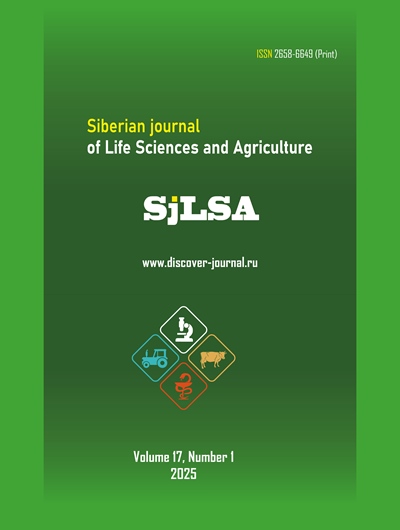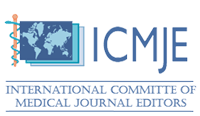The impact of organic residues on lead adsorption in two types of calcareous soils
Аннотация
The experiment was conducted in the laboratories of the University of Agriculture in Basra University. The study included investigating the behavior of lead adsorption in soil samples at equilibrium conditions and factors affecting adsorption by organic residues (animal and plant) Soil samples were taken from two different locations in Basra State (Al-Zubair and Kutayban). A laboratory experiment was conducted in which five volumes of mg L -1 of lead (20-40-80-160-200) were added to each soil sample, with three modified for the Langmuir and Freundlich equations of the adsorption system was used to describe the nature of lead adsorption in the soil sample under investigation. The study concluded that the rate of adsorption increased with increasing amount of lead added, and the change in soil adsorption capacity was responsible for differences in chemical and physical properties of experimental soil of the species, represented by calcium carbonate concentration, organic matter, clay content and type, pH, and ionic strength.
EDN: OIJERN
Скачивания
Литература
Bhagure, G. R., & Mirgane, S. R. (2010). Heavy metal concentrations in groundwaters and soils of Thane region of Maharashtra, India. Environmental Monitoring and Assessment, 173(1–4), 643–652. https://doi.org/10.1007/s10661-010-1412-9
Abdulateef, A. A., & Naser, K. M. (2021). A study of irrigation water pollution by some heavy metals in Baghdad Governorate. IOP Conference Series: Earth and Environmental Science, 910(1), 012091. https://doi.org/10.1088/1755-1315/910/1/012091
Mustafa, G., & Komatsu, S. (2016). Toxicity of heavy metals and metal-containing nanoparticles on plants. Biochimica et Biophysica Acta (BBA)—Proteins and Proteomics, 1864(8), 932–944. https://doi.org/10.1016/j.bbapap.2016.02.020
Nazli, F., Mustafa, A., Ahmad, M., Hussain, A., Jamil, M., Wang, X., Shakeel, Q., Imtiaz, M., & El-Esawi, M. A. (2020). A review on practical application and potentials of phytohormone-producing plant growth-promoting rhizobacteria for inducing heavy metal tolerance in crops. Sustainability, 12(21), 9056. https://doi.org/10.3390/su12219056
Uddin, M. K. (2017). A review on the adsorption of heavy metals by clay minerals, with special focus on the past decade. Chemical Engineering Journal, 308, 438–462. https://doi.org/10.1016/j.cej.2016.09.029
Duru, M., Nwanekwu, K., Adindu, E., Odika, P. (2012). Heavy metal and bio-load levels of Otamiri River, Owerri, Imo State, Nigeria. Archives of Applied Science Research, 4, 1002–1006.
Al-Jumaili, M. F., & Ahmed, S. H. (2018). Soil and water pollution. Baghdad, Iraq, 2018, pp. 175–184.
WHO. (2018). Global alliance to eliminate lead paint. Retrieved from www.who.int.
Fairén, A. G., Davila, A. F., Lim, D., Bramall, N., Bonaccorsi, R., Zavaleta, J., Uceda, E. R., et al. (2010). Astrobiology through the ages of Mars: The study of terrestrial analogues to understand the habitability of Mars. Astrobiology, 10(8), 821–843. https://doi.org/10.1089/ast.2009.0440
Facchinelli, A., Sacchi, E., & Mallen, L. (2001). Multivariate statistical and GIS-based approach to identify heavy metal sources in soils. Environmental Pollution, 114(3), 313–324. https://doi.org/10.1016/S0269-7491(00)00243-8
WHO. (2000). The world health report: Health systems—Improving performance. Geneva: World Health Organization. Retrieved from Google Books.
Hernberg, S. (2000). Lead poisoning in a historical perspective. American Journal of Industrial Medicine, 38(3), 244–254. https://doi.org/10.1002/1097-0274(200009)38:3<244::AID-AJIM3>3.0.CO;2-F
Gopal, R., & Khurana, N. (2011). Effect of heavy metal pollutants on sunflower. African Journal of Plant Science, 5(9), 531–536.
Makino, T., Luo, Y., Wu, L., Sakurai, Y., Maejima, Y., Akahane, I., & Arao, T. (2010). Heavy metal pollution of soil and risk alleviation methods based on soil chemistry. Pedologist, 53(3), 38–49.
Hayani, A. S. J. Z. A., & Al-Obaidi, M. A. J. (2018). Lead adsorption in some calcareous soils in northern Iraq. Iraqi Journal of Soil Science, 18(1), 240–246.
Mishra, S. (2012). Application of granular activated carbon developed from agricultural waste as a natural gas storage vehicle. International Journal of Engineering and Technology, 4(4), 468–470. https://doi.org/10.7763/IJET.2012.V4.412
Kwon, J.-S., Yun, S.-T., Lee, J.-H., Kim, S.-O., & Jo, H. Y. (2010). Removal of divalent heavy metals (Cd, Cu, Pb, and Zn) and arsenic(III) from aqueous solutions using scoria: kinetics and equilibria of sorption. Journal of Hazardous Materials, 174(1–3), 307–313. https://doi.org/10.1016/j.jhazmat.2009.09.052
Yadanaparthi, S. K. R., Graybill, D., & Wandruszka, R. von. (2009). Adsorbents for the removal of arsenic, cadmium, and lead from contaminated waters. Journal of Hazardous Materials, 171(1–3), 1–15. https://doi.org/10.1016/j.jhazmat.2009.05.103
Sparks, D. L., Singh, B., & Siebecker, M. G. (n.d.). Environmental Soil Chemistry. Retrieved from Google Books, Elsevier, pp. 297.
Al-Qudro, M. B., Ajouri, A., & Miwak, H. M. (2017). Study of cadmium and lead adsorption kinetics in soil using column experiment. Al-Baath University Journal, 39(17), 107–118.
Gupta, B. K. S. (1989). Morphology and generic placement of the foraminifer "Anomalina" Wuellerstorfi Schwager. Journal of Paleontology, 63(5), 706–713.
Goldberg, S., & Glaubig, R. A. (1985). Boron adsorption on aluminum and iron oxide minerals. Soil Science Society of America Journal, 49(6), 1374–1379. https://doi.org/10.2136/sssaj1985.03615995004900060009x
Ali, D. A. M., & Yassin, M. M. (2023). Comparison study for some heavy metals removal by plant residues from its aqueous solutions. European Scholar Journal, 4(8), 1–9.
Dávila-Jiménez, M. M., Elizalde-González, M. P., Geyer, W., Mattusch, J., & Wennrich, R. (2003). Adsorption of metal cations from aqueous solution onto a natural and a model biocomposite. Colloids and Surfaces A: Physicochemical and Engineering Aspects, 219(1–3), 243–252. https://doi.org/10.1016/S0927-7757(03)00052-9
Soto, M. L., Moure, A., Domínguez, H., & Parajó, J. C. (2011). Recovery, concentration and purification of phenolic compounds by adsorption: A review. Journal of Food Engineering, 105(1), 1–27. https://doi.org/10.1016/j.jfoodeng.2011.02.010
Foo, K. Y., & Hameed, B. H. (2010). Insights into the modeling of adsorption isotherm systems. Chemical Engineering Journal, 156(1), 2–10. https://doi.org/10.1016/j.cej.2009.09.013
Mupa, M. T. (2015). Preparation of rice hull activated carbon for the removal of selected pharmaceutical waste compounds in hospital effluent. Journal of Environmental & Analytical Toxicology, 7(8), 1–12. https://doi.org/10.4172/2161-0525.S7-008
Ayben Kilislioğlu, & Binay Bilgin. (2003). Thermodynamic and kinetic investigations of uranium adsorption on amberlite IR-118H resin. Applied Radiation and Isotopes, 58(2), 155–160. https://doi.org/10.1016/S0969-8043(02)00316-0
Kamari, A., & Ngah, W. S. W. (2009). Isotherm, kinetic and thermodynamic studies of lead and copper uptake by H₂SO₄ modified chitosan. Colloids and Surfaces B: Biointerfaces, 73(2), 257–266. https://doi.org/10.1016/j.colsurfb.2009.05.024
Ünlü, N., & Ersoz, M. (2006). Adsorption characteristics of heavy metal ions onto a low-cost biopolymeric sorbent from aqueous solutions. Journal of Hazardous Materials, 136(2), 272–280. https://doi.org/10.1016/j.jhazmat.2005.12.013
Просмотров аннотации: 226 Загрузок PDF: 49
Copyright (c) 2025 Ayat Jasem Mohammed, Salwa Jumaa Fakher

Это произведение доступно по лицензии Creative Commons «Attribution-NonCommercial-NoDerivatives» («Атрибуция — Некоммерческое использование — Без производных произведений») 4.0 Всемирная.






















































